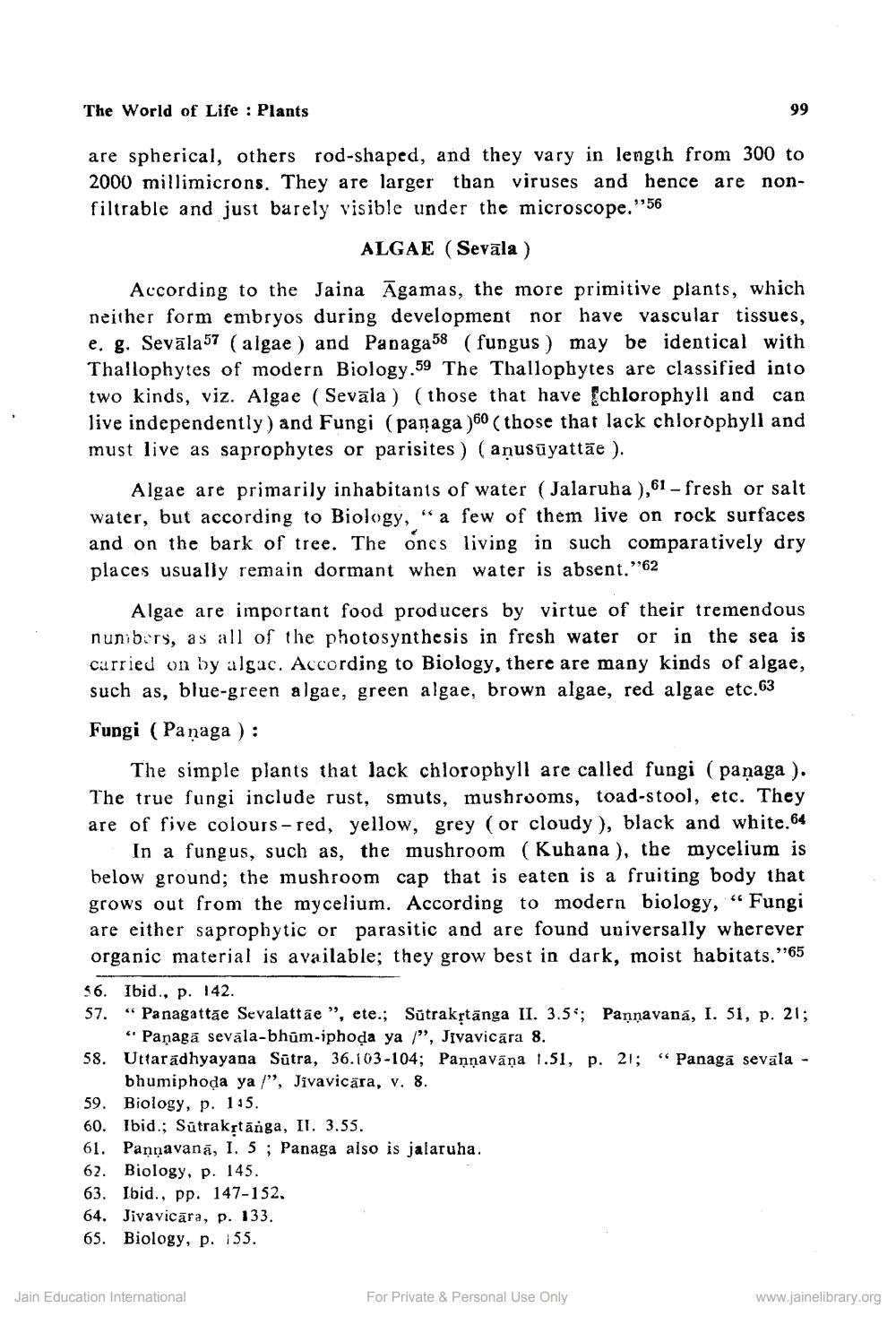________________
The World of Life : Plants
are spherical, others rod-shaped, and they vary in length from 300 to 2000 millimicrons. They are larger than viruses and hence are nonfiltrable and just barely visible under the microscope."56
ALGAE (Sevāla )
According to the Jaina Agamas, the more primitive plants, which neither form embryos during development nor have vascular tissues, e. g. Sevāla57 (algae) and Panaga58 (fungus) may be identical with Thallophytes of modern Biology.59 The Thallophytes are classified into two kinds, viz. Algae (Sevāla ) (those that have chlorophyll and can live independently) and Fungi (panaga )60(those that lack chlorophyll and must live as saprophytes or parisites ) (anusūyattāe ).
Algae are primarily inhabitants of water (Jalaruha ),61 - fresh or salt water, but according to Biology, “a few of them live on rock surfaces and on the bark of tree. The ones living in such comparatively dry places usually remain dormant when water is absent."62
Algae are important food producers by virtue of their tremendous nunibers, as all of the photosynthesis in fresh water or in the sea is carried on by algac. According to Biology, there are many kinds of algae, such as, blue-green algae, green algae, brown algae, red algae etc. 63
Fungi (Panaga ):
The simple plants that lack chlorophyll are called fungi (paņaga ). The true fungi include rust, smuts, mushrooms, toad-stool, etc. They are of five colours-red, yellow, grey (or cloudy ), black and white.64
In a fungus, such as, the mushroom (Kuhana ), the mycelium is below ground; the mushroom cap that is eaten is a fruiting body that grows out from the mycelium. According to modern biology, “Fungi are either saprophytic or parasitic and are found universally wherever organic material is available; they grow best in dark, moist habitats.'65 56. Ibid., p. 142. 57. “ Panagattae Sevalattae", ete.; Sutrakstānga II. 3.59; Pannavaná, I. 51, p. 21;
“ Panagā sevala-bhūm-iphoda ya /", Jivavicāra 8. 58. Uttaradhyayana Sūtra, 36.103-104; Paņņavāna 1.51, p. 21; “Panagā sevala -
bhumiphoda ya /”, Jivavicāra, v. 8. 59. Biology, p. 115. 60. Ibid.; Sūtrakrtānga, II. 3.55. 61. Pannavanā, I. 5; Panaga also is jalaruha. 62. Biology, p. 145. 63. Ibid., pp. 147-152. 64. Jivavicara, p. 133. 65. Biology, p. 155.
Jain Education International
For Private & Personal Use Only
www.jainelibrary.org




